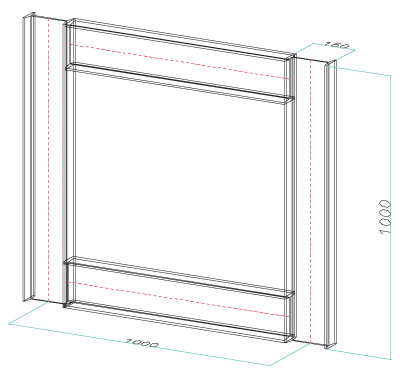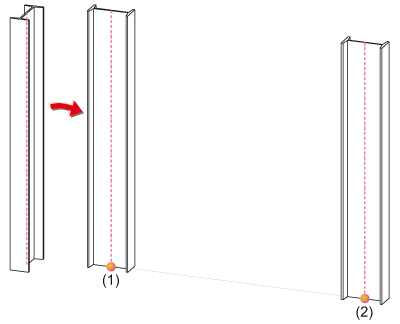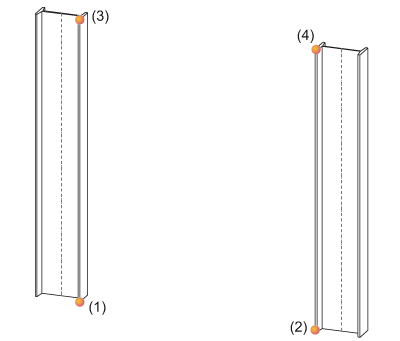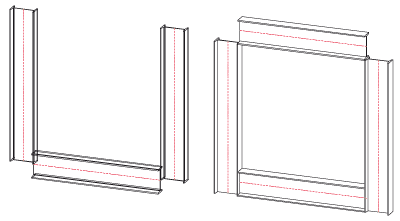Example - Standard Beam
Steel Engineering > New > Standard beam 
An example will explain how standard beams are fitted.

Proceed as follows:
- Start you steel engineering drawing by selecting Drawing > New.
- Activate the Steel Engineering tab.
- In the New function group, click the Standard beam
 icon. The Standard
beams function is set as the default and the Beam
selection window is displayed.
icon. The Standard
beams function is set as the default and the Beam
selection window is displayed. - Choose I-beams according to DIN 1025-1, size 160.
- Click OK to exit the window.
- The Insertion options menu bar is displayed, and HiCAD asks you to specify the beam start point.
- The first step is to insert the two perpendicular beams.
- Activate the
Insert beam perpendicular to processing plane
 option
option - Activate the
Insert beam via point and length
 option.
option. - Enter the profile length, 1000.
- Then, simply click the mouse to specify the start point of the beam. The beam is fitted in the specified length.
- In the Insertion options menu bar, enter the rotation angle 90
and click the Rotate
 icon. The 1st beam is rotated.
icon. The 1st beam is rotated. - Now fit the second beam, without modifying the insertion options. You want the beam to be generated in x-distance 1000 from the 1st beam. The start point of the beam axis is to be used as the reference point
- On the keyboard, enter R (RELATIVE point option). Press the left mouse button in order to choose the reference point. Identify the isolated point at the start of the beam axis (J with the Autopilot). Enter 1000 as the x-distance, 0 for the other distances.

Left: 1st beam - Centre: 1st beam rotated, (1) Reference point for 2nd beam - Right: 2nd beam directly rotated, (2) R 100 0 0
The second beam is automatically rotated, as the function was not exited in between
Click View All ![]() .
This does not end beam fitting
.
This does not end beam fitting
- It is now the turn of the two other beams to be fitted. The same beam type is to be used. The Insertion options menu bar is still active and HiCAD asks you to specify the beam start point
- Activate the Fit beam in space
 option.
option. - Activate the
Fit beam via 2 points
 option.
option.

(1)-(2) Start and end points of the 3rd beam, (3)-(4) Start and end points of the 4th beam
- Specify the start and end points of the 3rd beam.
- The position of the 3rd beam is not yet correct, as the centroid was chosen as the fitting point. Simply choose Bottom right as the fitting point. The beam is fitted correctly.

Left: The position of beam 3 is not yet correct Right: Position of beam 3 corrected, position of beam (4) is still incorrect
- Do not change the options, and specify the start and end points of the 4th beam. The position of the 4th beam is not yet correct. In the insertion options, simply choose Top right as the fitting point.

